CWU Greater Mersey Amal Area Safety Rep Jamie McGovern ists on the IWMD Liverpool event organising committee and provides a detailed report of the events that took place on this year's IWMD on Sunday 28th April.
Merseyside IWMD 2019- It was a grey sombre day which in some ways perfectly reflected the mood, as Dozens of individuals from the Merseyside community paid respectful remembrance at the commemoration taking place at the Mersey Tunnel workers memorial for IWMD 2019.
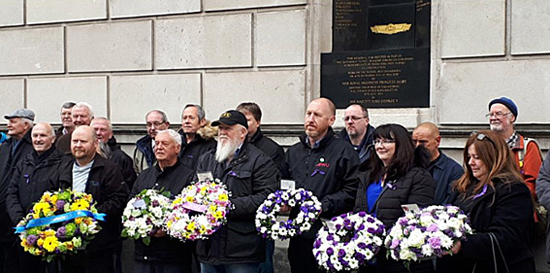
17 men died during the construction of the tunnel. This memorial was erected as part of the Queensway Tunnel Diamond Jubilee Celebrations in remembrance of those who died during its construction.
This year’s Memorial Day included special invited guest speakers Darren Pilling (RMT union) Mark Rowe (FBU) & Professor Steve Tombs (Open University).
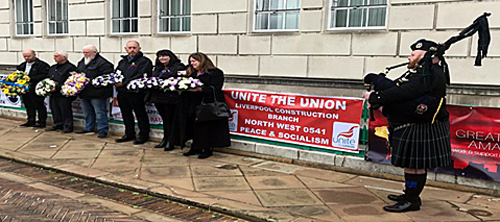
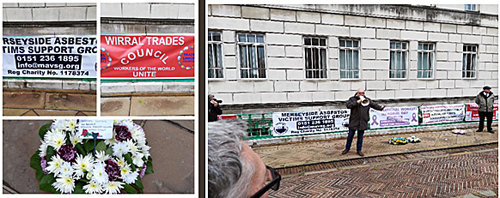
The ceremony took place at St Georges Piazza and then moved to The Liverpool Racquets club chapel street L3 where invited speakers addressed those who gathered.
Darren Pilling from RMT spoke powerfully and candidly about the many challenges the trade unions currently face and how important it is that days like IWMD are remembered in our annual working calendar. Darren directly referenced this year’s theme of ‘dangerous substances’ and challenged the fact and stark reality that some employers treat Workplace Exposure Limits (WEL’s) are a measure they can ‘just fall short of’ for it to be acceptable. No workers should be exposed to unnecessary risk and even one case of unsafe work is one too many.
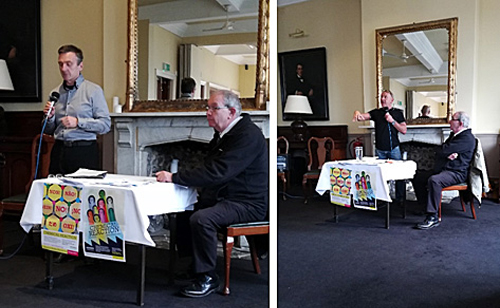
Mark Rowe (FBU Regional Secretary for the North West) pictured above left, & Professor Steve Tombs (Professor of Criminology at The Open University) pictured right, both spoke about Grenfell and the failings & inadequacies that lead to that tragic event.
Mark mentioned that because of cuts from central government, the majority of fire stations now only have one fire engine, whereas in 2010, many had two.
Closures, earmarked closures, and downgrading of stations, axing of fire engines and axing fire fighters only results in increased attendance times as fire engines travel from further afield. The severity of risk increases because the likely increase in attendance times means that a fire has more time to develop, this results in a greater risk to the public and firefighters.
Increased attendance times also mean that people trapped in fires, machinery, vehicles or lifts must wait longer for support to arrive. Mark emphasised that firefighters will always put the public first, we will always attempt to rescue people, even if that means we must jeopardise our own safety to do so. This appalling government know that, and that’s how they get away with cuts compromising our safety & your safety.
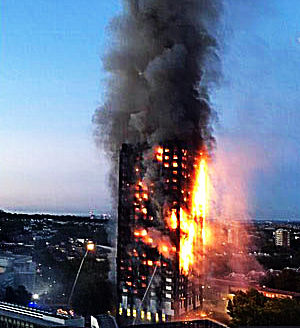 Talking about Grenfell he mentioned the almost unfathomable fact that Fire fighters at Grenfell were asked to write their surnames on the fire helmets to enable quick identification in the event of death.
Talking about Grenfell he mentioned the almost unfathomable fact that Fire fighters at Grenfell were asked to write their surnames on the fire helmets to enable quick identification in the event of death.
This Consideration of possible death because of the job you do should never be classed as a ‘known acceptable risk’
Those in attendance were certainly keen to show our support for the firefighters serving our communities.
Steve mentioned the startling level of inequality between the ‘haves & have nots’ in the borough of Royal Kensington & Chelsea, he referenced the fact that this tragedy was wholly avoidable especially if the concerns voiced by the residents in Grenfell tower had been listened to.
There are other possible physical health effects of the fire which are perhaps less identifiable. It is not fully known what airborne toxins might have been emitted as a direct result of the fire, and what long-term effects exposures to these might be felt by residents and those in the living in the vicinity.
However, we do know that asbestos was present in the building, while hydrogen cyanide was emitted from the burning insulation. In addition to causing death, injury and illness, various aspects of the aftermath of the fire are likely to have caused detrimental health effects- Such as psychological and emotional problems with which victims will live for years to come.
These are likely to be associated with grief at the loss of loved ones, the recall of the horrors of the event, PTSD and possible guilt at survival, None are surprising. None are easily imaginable. None are easily remediable, not least given the parlous state of socially provided mental health services in the UK.
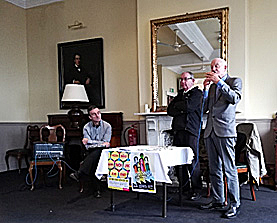 As always with IWMD annual meetings there were many valuable contributions from the floor, none more so than from Tony Mulhern who recalled his early employed days when working at a print works and being exposed to unmeasured levels of carcinogens.
As always with IWMD annual meetings there were many valuable contributions from the floor, none more so than from Tony Mulhern who recalled his early employed days when working at a print works and being exposed to unmeasured levels of carcinogens.
He is now sadly living with the consequence of drastic ill health due to irresponsible exposure to dangerous work substances. Tony urged those in attendance to keep fighting for ‘safe work’ and continue to keep 28th April as your day to remember the victims from the world of work.
Councillor Anna Rothery reminded all attending that Vigils are still being held in Liverpool to show solidarity with the victims of the Grenfell Tower fire disaster.
An open invite was offered to anyone wishing to meet at St Luke’s Church on Berry Street on the 14th of each month at 6pm show their support the Justice4Grenfell movement.
The Grenfell Tower blaze in London in June 2017, which killed 72 people and devastated the lives of hundreds of survivors, Liverpool certainly has a role to play in backing Justice4Grenfell.
I close this report of today’s event with a quote from Darren Pilling, Rail, Maritime Transport Union (RMT):
"For those of us who fight for better workplaces for the members we represent, returning home safe when you clock off has got to remain our number one priority. There is no compromise on Workplace Health & Safety! On Sunday I attended at the Pier Head to remember those who have died. On Monday the reflection will inspire me to continue to fight for the living."
The History of International Workers Memorial Day

Workers' Memorial Day ribbon
In 1984, the Canadian Union of Public Employees (CUPE) established a day of mourning. The Canadian Labour Congress declared an annual day of remembrance in 1985 on April 28, which is the anniversary of a comprehensive Workers' Compensation Act passed in 1914.
In 1989, the AFL-CIO declared April 28 “Workers' Memorial Day” to honour the hundreds of thousands of working people killed and injured on the job every year. April 28th is the anniversary of the date the Occupational Safety and Health Act of 1970 went into effect, and when the Occupational Safety and Health Administration was formed (April 28, 1971).
In 1991, the Canadian parliament passed an Act respecting a National Day of Mourning for persons killed or injured in the workplace, making April 28 an official Workers’ Mourning Day.
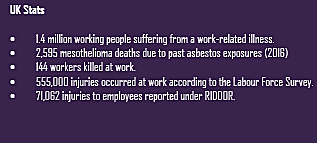
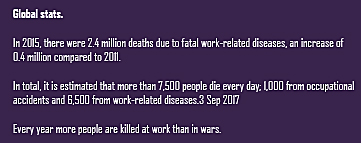
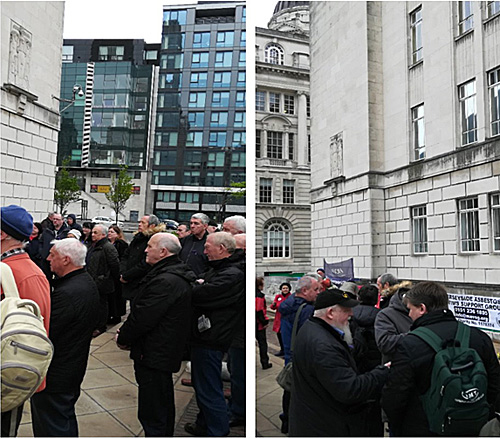
Report and pics: Jamie McGovern 28th April 2019





 Talking about Grenfell he mentioned the almost unfathomable fact that Fire fighters at Grenfell were asked to write their surnames on the fire helmets to enable quick identification in the event of death.
Talking about Grenfell he mentioned the almost unfathomable fact that Fire fighters at Grenfell were asked to write their surnames on the fire helmets to enable quick identification in the event of death.  As always with IWMD annual meetings there were many valuable contributions from the floor, none more so than from Tony Mulhern who recalled his early employed days when working at a print works and being exposed to unmeasured levels of carcinogens.
As always with IWMD annual meetings there were many valuable contributions from the floor, none more so than from Tony Mulhern who recalled his early employed days when working at a print works and being exposed to unmeasured levels of carcinogens. 


